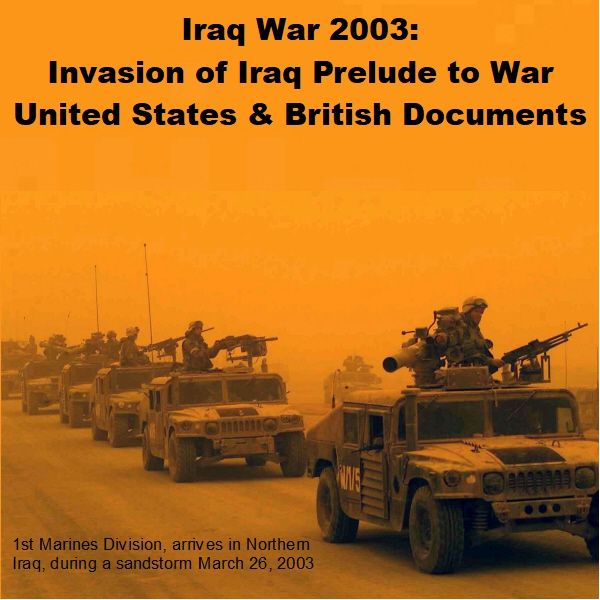
Description
Architects of Conflict: The Iraq War Timeline
This timeline highlights key events and documents from 1997 to 2008, focusing on the development of the US and UK’s case for war against Iraq.
- 1997: (Implicit) Documents from this year are included in the collection, indicating the beginning of the period covered for the lead-up to the Iraq War.
- January 23, 2001: Memo on “Origins of the Iraq Regime Change Policy.” Three days after George W. Bush’s inauguration, Edward S. Walker, Jr. of the U.S. Department of State, Bureau of Near Eastern Affairs, sends an information memo to Colin Powell titled “Origins of the Iraq Regime Change Policy.” This suggests early consideration of regime change.
- June 29, 2001: Update on Iraqi Procurement of Aluminum Tubes. Robert J. Einhorn and James A. Larocco of the U.S. Department of State send a memo to Colin Powell, titled “Update on Efforts to Prevent Iraqi Procurement of Aluminum Tubes,” indicating early concerns about Iraq’s procurement activities.
- July 27, 2001: Rumsfeld Recommends Action on Iraq. U.S. Defense Department Memo from Donald Rumsfeld to Condoleezza Rice, titled “Iraq.” Rumsfeld recommends a Principals Committee meeting and then a National Security Council meeting on Iraq. He expresses concern over failing sanctions and improving Iraqi air defenses, and suggests that the U.S. will likely confront a nuclear-armed Saddam within a few years. He also states that ousting Saddam’s regime would significantly improve the U.S.’s regional position.
- December 17, 2001: Defense Department Considers “Pre-emptive Operations.” U.S. Department of Defense Memo from Robert Andrews to Douglas Feith, titled “Pre-emptive Operations.” Andrews advises Feith to read an op-ed by a conservative Catholic theologian asserting a “moral justification for a pre-emptive strike against Iraq” within the just-war tradition.
- December 18, 2001: European Opposition to War Without 9/11 Link. U.S. Department of State Bureau of Intelligence and Research Intelligence Assessment, “Europe: Key Views on Iraqi Threat and Next Steps.” This assessment indicates that France and Germany would find war against Iraq highly problematic “absent incontrovertible evidence of links to the September 11 attacks.” It notes that only British Prime Minister Tony Blair would support a U.S. attack, and “at substantial political cost.”
- March 8, 2002: UK Cabinet Acknowledges US Regime Change Goal and Lack of Legal Justification. United Kingdom, Cabinet Office, Overseas and Defense document notes that “The US administration has lost faith in containment and is now considering regime change.” It explicitly states, “A legal justification for invasion would be needed” and that “none currently exists.” It recommends a “staged approach” for international support and a six-month military preparation period.
- June 3, 2002: Draft of “Dodgy Dossier” Emerges (Earliest Version). A covering note and draft U.K. white paper: “British Government briefing paper on Iraq – 03 June 2002” is created. This is the earliest publicly available version of what would become the UK’s “dossier” on “Iraq’s weapons of mass destruction.” It mentions Iraq’s attempts to acquire “specialised aluminium” for uranium enrichment.
- August 4, 2002: Central Command Briefing on “Hybrid” War Plan. Central Command briefing, “Compartmented Concept Update.” This briefing outlines the “hybrid” war plan, envisioning a war launched before full force capability, with follow-on increments. It covers conflict phases, including a “Phase IV” occupation of Iraq, force generation timelines, and military strategy.
- September 11, 2002: Treasury Memo on Economic Impact of War. U.S. Treasury Department Memorandum Subject: Briefing for your lunch with Vice President Cheney on the economic impact of a war with Iraq. This memo is for Treasury Secretary Paul O’Neill from Richard Claudia, Assistant Secretary for Economic Policy.
- September 24, 2002: “Dodgy Dossier” (Final Release) Presented to Parliament. British Government, dossier on “Iraq’s Weapons of Mass Destruction” is released. Tony Blair presents this document to parliament, asserting that intelligence “established beyond doubt” that Saddam Hussein possessed and was developing WMD, including weapons deployable within 45 minutes. It claims to be based on authentic British intelligence assessments.
- Later Controversy: The term “Dodgy Dossier” was coined by Spiked magazine and later popularized by Channel 4 News after Glen Rangwala’s discovery of extensive plagiarism, including from a 13-year-old thesis by Ibrahim al-Marashi.
- October 4, 2002: CIA White Paper on Iraqi WMD Programs. CIA white paper, “Iraq’s Weapons of Mass Destruction Programs,” is published. This paper, released two days after a related National Intelligence Estimate (NIE), is significantly strengthened compared to earlier drafts. It includes a “within a year” worst-case nuclear timeline and references the aluminum tubes.
- March 20, 2003: Invasion of Iraq Commences. (The collection focuses on the prelude, but this is the date the documents are leading up to).
- July 3, 2003: House of Commons Foreign Affairs Committee Report (Volume I). The Decision to go to War in Iraq Ninth Report of Session 2002–03 Volume I Report is ordered to be printed.
- July 17, 2003: House of Commons Foreign Affairs Committee Report (First Special Report). Evidence from Mr. Andrew Gilligan to the Committee’s Inquiry into The Decision to go to War in Iraq First Special Report of Session 2002–03 is published.
- July 9, 2004: Senate Intelligence Committee Report (Phase 1). Report of the Select Committee on Intelligence on the U.S. Intelligence Community’s Prewar Intelligence Assessments on Iraq July 9, 2004 – Phase 1 is released.
- April 25, 2005: Duelfer Report (Revised). Comprehensive Report of the Special Advisor to the DCI on Iraq’s WMD, with Addendums (Duelfer Report) Revised is released.
- September 8, 2006: Senate Report on Iraqi WMD Intelligence (Phase II Part 1 & 2).Phase II Part 1: Postwar Findings about Iraq’s WMD Programs and Links to Terrorism and How they Compare with Prewar Assessments is released.
- Phase II Part 2: The Use by the Intelligence Community of Information Provided by the Iraqi National Congress is released.
- February 9, 2007: DOD Inspector General Review. Review of the Pre-Iraqi War Activities of the Office of the Under Secretary of Defense for Policy – Inspector General United States Department of Defense is released.
- May 25, 2007: Senate Report on Iraqi WMD Intelligence (Phase II Part 3). Prewar Intelligence Assessments About Postwar Iraq is released.
- June 2008: Senate Report on Policy Counterterrorism Evaluation Group. Senate Report on Intelligence Activities Relating to Iraq conducted by the Policy Counterterrorism Evaluation Group and the Office of Special Plans within the Office of the Under Secretary of Defense for Policy is released.
Cast of Characters
Here are the principal people mentioned in the sources, with brief bios:
- George W. Bush: President of the United States, sworn into office on January 20, 2001. The documents cover the development of his administration’s case for war against Iraq.
- Tony Blair: Prime Minister of the United Kingdom. A key ally to the U.S. in the lead-up to the war, he supported a U.S. attack “at substantial political cost” and presented the “Dodgy Dossier” to Parliament.
- Saddam Hussein: President of Iraq. The central figure of the conflict, accused of possessing and developing Weapons of Mass Destruction (WMD). The goal of “regime change” revolved around his removal from power.
- Colin Powell: U.S. Secretary of State. Received various memos and updates regarding Iraq’s regime change policy and WMD procurement efforts.
- Donald Rumsfeld: U.S. Secretary of Defense. Advocated for confronting Saddam Hussein due to failing sanctions and improving air defenses, recommending high-level meetings on Iraq and suggesting the possibility of Saddam acquiring nuclear weapons.
- Condoleezza Rice: U.S. National Security Advisor (at the time of Rumsfeld’s memo). Received Rumsfeld’s memo recommending meetings on Iraq.
- Edward S. Walker, Jr.: U.S. Department of State, Bureau of Near Eastern Affairs. Authored the “Origins of the Iraq Regime Change Policy” memo to Colin Powell.
- Robert J. Einhorn: U.S. Department of State. Co-authored the memo to Colin Powell regarding Iraqi procurement of aluminum tubes.
- James A. Larocco: U.S. Department of State. Co-authored the memo to Colin Powell regarding Iraqi procurement of aluminum tubes.
- Robert Andrews: U.S. Department of Defense, Special Operations chief. Wrote a memo to Douglas Feith recommending reading an op-ed justifying pre-emptive action against Iraq.
- Douglas Feith: U.S. Under Secretary of Defense for Policy. Received the memo from Robert Andrews regarding pre-emptive operations. His office, specifically the Office of Special Plans and the Policy Counterterrorism Evaluation Group, were later subject to intelligence activity reviews.
- Paul O’Neill: U.S. Treasury Secretary. Was to receive a briefing from Richard Claudia on the economic impact of a war with Iraq.
- Richard Claudia: U.S. Assistant Secretary for Economic Policy, Treasury Department. Prepared a memo for Treasury Secretary Paul O’Neill on the economic impact of a war with Iraq.
- Vice President Cheney: (Full name Dick Cheney) U.S. Vice President. Was to be briefed by Paul O’Neill on the economic impact of a war with Iraq.
- Andrew Gilligan: A reporter (presumably for the BBC, though not specified in the source). His evidence was reviewed by the House of Commons Foreign Affairs Committee in its inquiry into the decision to go to war. This likely relates to his reporting on the “45 minutes” claim.
- Glen Rangwala: An academic. Discovered that much of the UK’s Iraq Dossier had been plagiarized from unattributed sources, contributing to the “Dodgy Dossier” controversy.
- Ibrahim al-Marashi: Then a graduate student. His 13-year-old thesis, “Iraq’s Security and Intelligence Network: A Guide and Analysis,” was a significant source plagiarized in the UK’s Iraq Dossier.
- Julian Rush: Channel 4 News reporter. Employed the term “Dodgy Dossier” after being made aware of Glen Rangwala’s plagiarism discovery.
Iraq War 2003: Invasion of Iraq Prelude to War United States and British Documents
The 2003 Iraq Conflict: Documents from the United States and Britain Leading Up to the Invasion
This extensive compilation, comprising 3,128 pages, showcases the evolution of the rationale presented by the American and British governments to justify military action in Iraq, which commenced on March 20, 2003. The materials span a period from 1997 through 2008, though the majority originate from 2002. Contents feature papers from diverse government bodies, including the U.S. Executive Office of the President, Department of State, Department of Defense, and Central Intelligence Agency, as well as the UK Foreign and Commonwealth Office and the Prime Minister’s Office. Furthermore, it encompasses reports from both American and British sources, critically examining the policy choices and intelligence assessments that preceded the conflict. Notable items within this documentation are:
An informative memorandum from the U.S. Department of State’s Bureau of Near Eastern Affairs, dated January 23, 2001—just three days after George W. Bush assumed the presidency. This memo, penned by Edward S. Walker, Jr. to Colin Powell, is titled “Origins of the Iraq Regime Change Policy.”
A June 29, 2001 memo from the U.S. Department of State, addressed to Colin Powell by Robert J. Einhorn and James A. Larocco, providing an “Update on Efforts to Prevent Iraqi Procurement of Aluminum Tubes.”
A U.S. Defense Department memorandum penned by Donald Rumsfeld for Condoleezza Rice on July 27, 2001, concerning “Iraq.” In this, Rumsfeld advocates for sequential meetings of the Principals Committee and the National Security Council regarding Iraq, citing the inefficiency of current sanctions and apparent enhancements in Iraq’s aerial defense capabilities. He outlines potential strategies, asserting that “Within a few years the U.S. will undoubtedly have to confront a Saddam armed with nuclear weapons” (additionally predicting that Iran would “almost certainly” possess nuclear weapons by 2006) and proposing that “If Saddam’s regime were ousted, we would have a much-improved position in the region and elsewhere.”
On December 17, 2001, Robert Andrews, the head of Special Operations within the Department of Defense, sent a memo to Douglas Feith titled “Pre-emptive Operations.” He recommended that Feith review a forthcoming opinion piece by a conservative Catholic theologian, which posits a “moral justification for a pre-emptive strike against Iraq” and “demonstrates how pre-emptive action against Iraq fits into the just-war tradition.”
An intelligence evaluation from the U.S. Department of State’s Bureau of Intelligence and Research, dated December 18, 2001, titled “Europe: Key Views on Iraqi Threat and Next Steps.” This analysis suggests that any military intervention in Iraq, “absent incontrovertible evidence of links to the September 11 attacks,” would face significant opposition from France and Germany, with support for a U.S. attack likely coming only from British Prime Minister Tony Blair, and then “at substantial political cost.”
A March 8, 2002 paper from the United Kingdom’s Cabinet Office, Overseas and Defense section. It observes that “The US administration has lost faith in containment and is now considering regime change.” The document further states that “A legal justification for invasion would be needed” and that “none currently exists.” Analysts within the Cabinet Office proposed a “staged approach” to build international consensus, which would also align with the necessary six-month period for military preparations. The infamous “Dodgy Dossier,” along with its introductory note and initial draft from the U.K. government.The “British Government briefing paper on Iraq,” dated June 3, 2002, represents the initial publicly accessible iteration of what would later become the United Kingdom’s “dossier” concerning “Iraq’s weapons of mass destruction,” issued in September 2002. An accompanying note characterized this document as a “consolidated draft of Iraq papers as produced by CIC.” Within this preliminary version, there’s an indirect mention of Iraq’s efforts to obtain “specialized aluminum (British spelling),” an item under global export restrictions due to its possible utility in gas centrifuges designed for uranium enrichment.
The phrase “Dodgy Dossier” originated with the critical online publication Spiked, used initially in reference to the September Dossier. Subsequently, Channel 4 News adopted this terminology after its journalist, Julian Rush, learned of Glen Rangwala’s revelation that significant portions of the Iraq Dossier were copied from multiple uncredited origins, including an academic paper written thirteen years prior by a California State University student. The most prominent of these unacknowledged sources was an essay by Ibrahim al-Marashi, then a graduate student, titled “Iraq’s Security and Intelligence Network: A Guide and Analysis.”
A Central Command briefing on August 4, 2002, referred to as “Compartmented Concept Update,” comprised a collection of presentation slides outlining the comprehensive strategic design commanders would recognize as the “hybrid” warfare approach. This strategy involved initiating military action before the complete mobilization of forces, with subsequent deployments reinforcing the preliminary assault. The briefing addressed topics like different stages of conflict, culminating in a “Phase IV” post-conflict occupation of Iraq, the required duration for troop readiness and logistical accumulation, and a summary of the invasion’s military tactics.
On September 11, 2002, a U.S. Treasury Department Memorandum was issued, with the subject line pertaining to a briefing for an upcoming lunch with Vice President Cheney regarding the financial repercussions of military engagement with Iraq. This document was an internal memo intended for Treasury Secretary Paul O’Neill, penned by Richard Claudia, who served as the Assistant Secretary for Economic Policy.
The definitive version of the “Dodgy Dossier,” formally titled the “British Government dossier on Iraq’s Weapons of Mass Destruction,” was officially released on September 24, 2002. This paper, presented by Prime Minister Tony Blair to Parliament on that date, argued, in his words, for confronting Iraq’s Weapons of Mass Destruction, effectively serving as a justification for military intervention. In his introductory statement, Blair claimed that intelligence findings had “established beyond doubt” Saddam Hussein’s possession and ongoing development of WMDs, notably including arms capable of deployment within three-quarters of an hour. The publication was purported to rely on credible evaluations originating from within the UK’s intelligence services.
A Central Intelligence Agency (CIA) white paper, titled “Iraq’s Weapons of Mass Destruction Programs,” was released on October 4, 2002. This CIA report appeared two days following the National Intelligence Estimate (NIE) on the identical topic that was then under preparation. Compared to its preliminary July version, its argumentation had been considerably bolstered. It now incorporated the most dire nuclear development projection of “within a year” and mentioned the presence of aluminum tubes. It should be noted that every document mentioned comes with an introductory page detailing its designation, origin, and subject matter.The collection of documents, totaling 2,637 pages, comprises:
The Ninth Report of Session 2002–03, Volume I, from the House of Commons Foreign Affairs Committee, titled “The Decision to Go to War in Iraq,” accompanied by its official minutes, ordered for printing by The House of Commons on July 3, 2003.
The House of Commons Foreign Affairs Committee’s First Special Report of Session 2002–03, published on July 17, 2003, presenting Mr. Andrew Gilligan’s testimony to the Committee’s examination concerning the choice to engage in conflict in Iraq.
Phase 1 of the Select Committee on Intelligence’s report, dated July 9, 2004, focusing on the U.S. Intelligence Community’s assessments of Iraq prior to the conflict.
The exhaustive “Duelfer Report” from the Special Advisor to the Director of Central Intelligence regarding Iraq’s Weapons of Mass Destruction, along with its addendums, revised on April 25, 2005.
Part 1 of Phase II of the Senate Report on Iraqi WMD Intelligence, issued September 8, 2006, detailing postwar discoveries about Iraq’s WMD programs and their connections to terrorism, and comparing them with prewar evaluations.
Part 2 of Phase II of the Senate Report on Iraqi WMD Intelligence, dated September 8, 2006, addressing the intelligence community’s use of information furnished by the Iraqi National Congress.
A review from February 9, 2007, by the Inspector General of the United States Department of Defense, concerning the activities of the Office of the Under Secretary of Defense for Policy conducted before the Iraq War.
Part 3 of Phase II of the Senate Report on Iraqi WMD Intelligence, released May 25, 2007, which covers intelligence assessments made before the war regarding the anticipated state of postwar Iraq.
A Senate report from June 2008 outlining intelligence-related operations concerning Iraq carried out by the Policy Counterterrorism Evaluation Group and the Office of Special Plans, both units within the Office of the Under Secretary of Defense for Polic
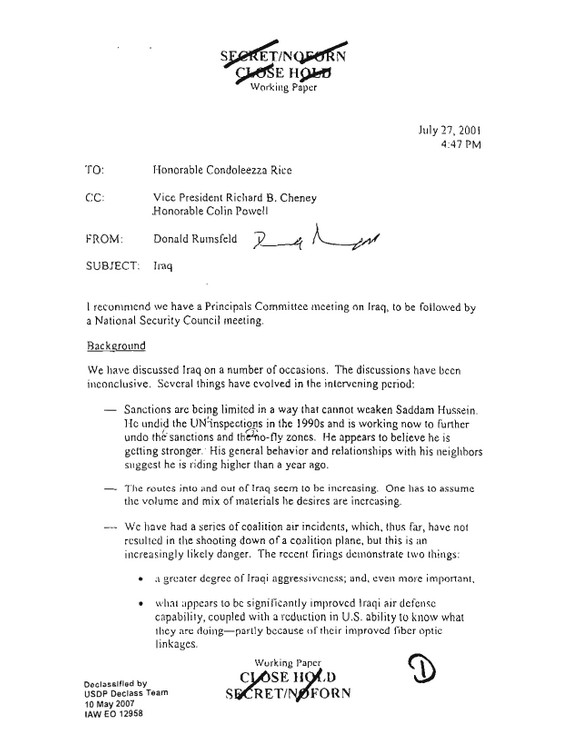
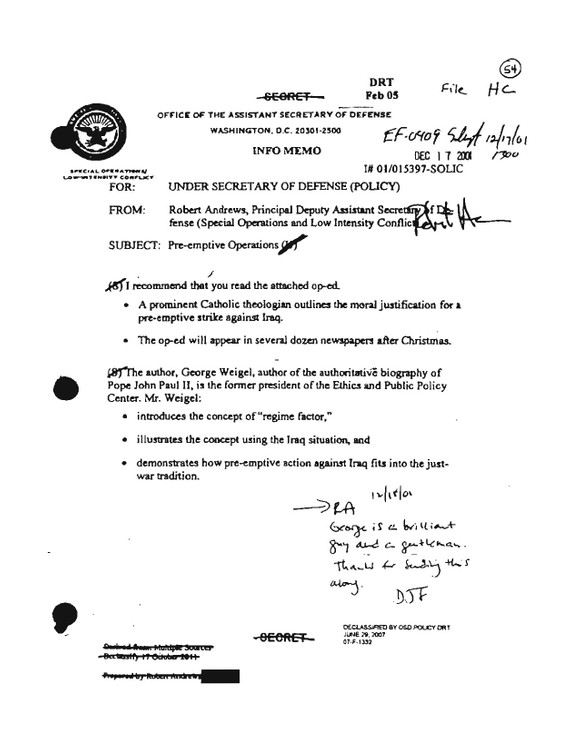
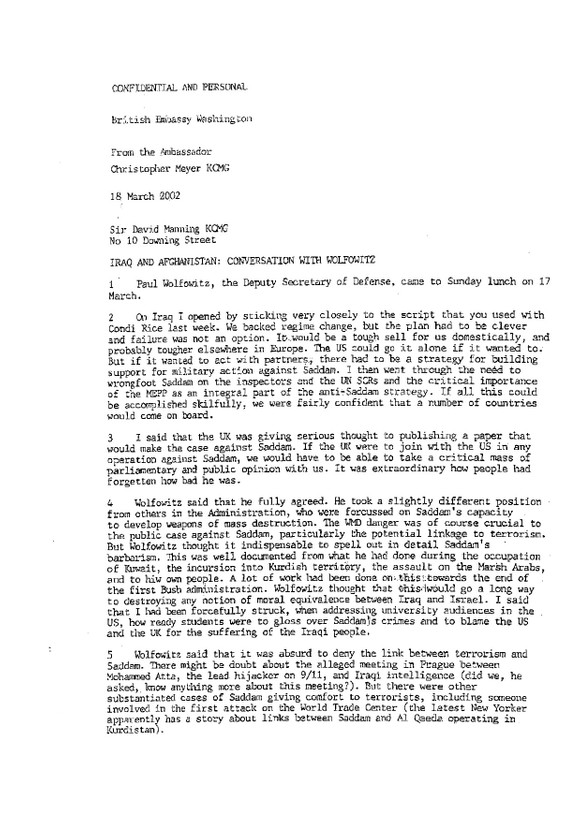

Related products
-
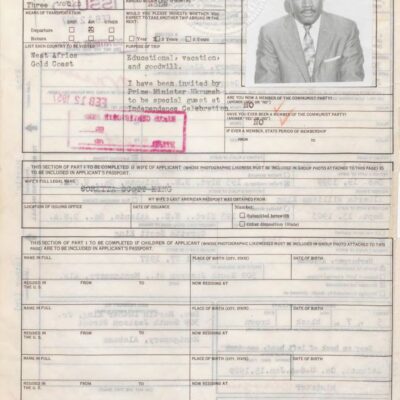
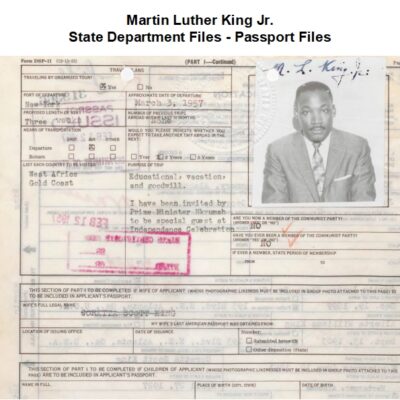
Martin Luther King Jr. State Department Records – Passport Files
$3.94 Add to Cart -
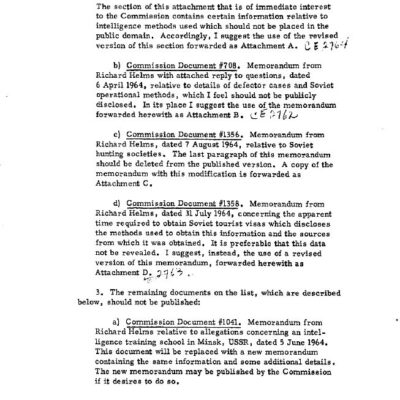
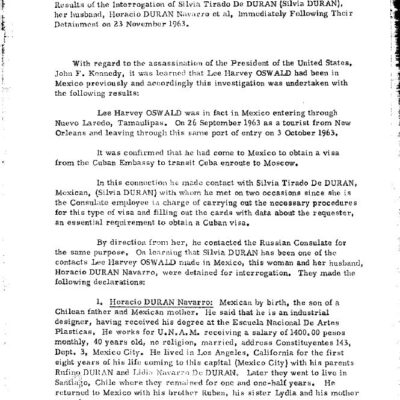
John F. Kennedy Assassination: CIA Reports
$19.50 Add to Cart -
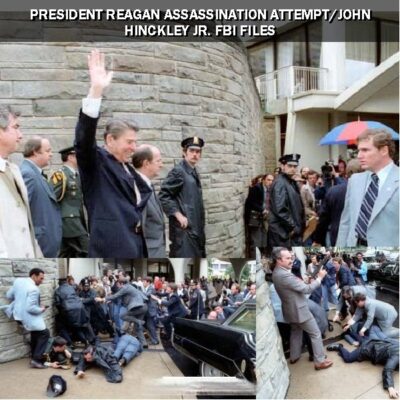
President Ronald Reagan Assassination Attempt John Hinckley Jr. FBI Files
$19.50 Add to Cart -

John F. Kennedy 1960 Presidential Election Campaign
$19.50 Add to Cart